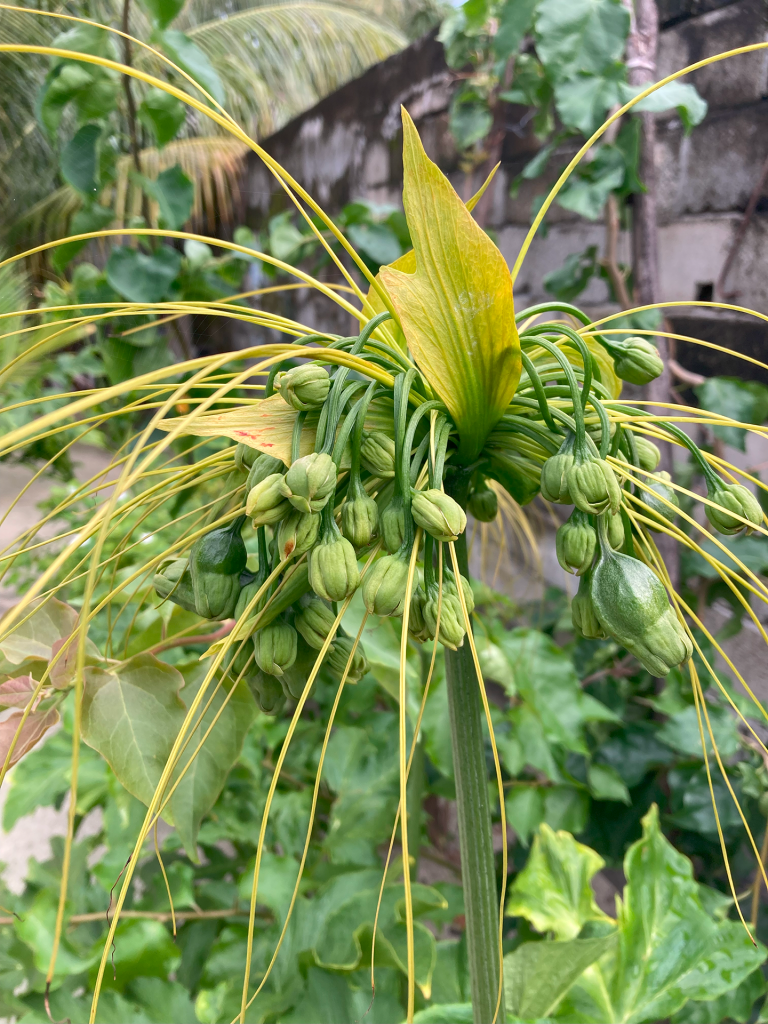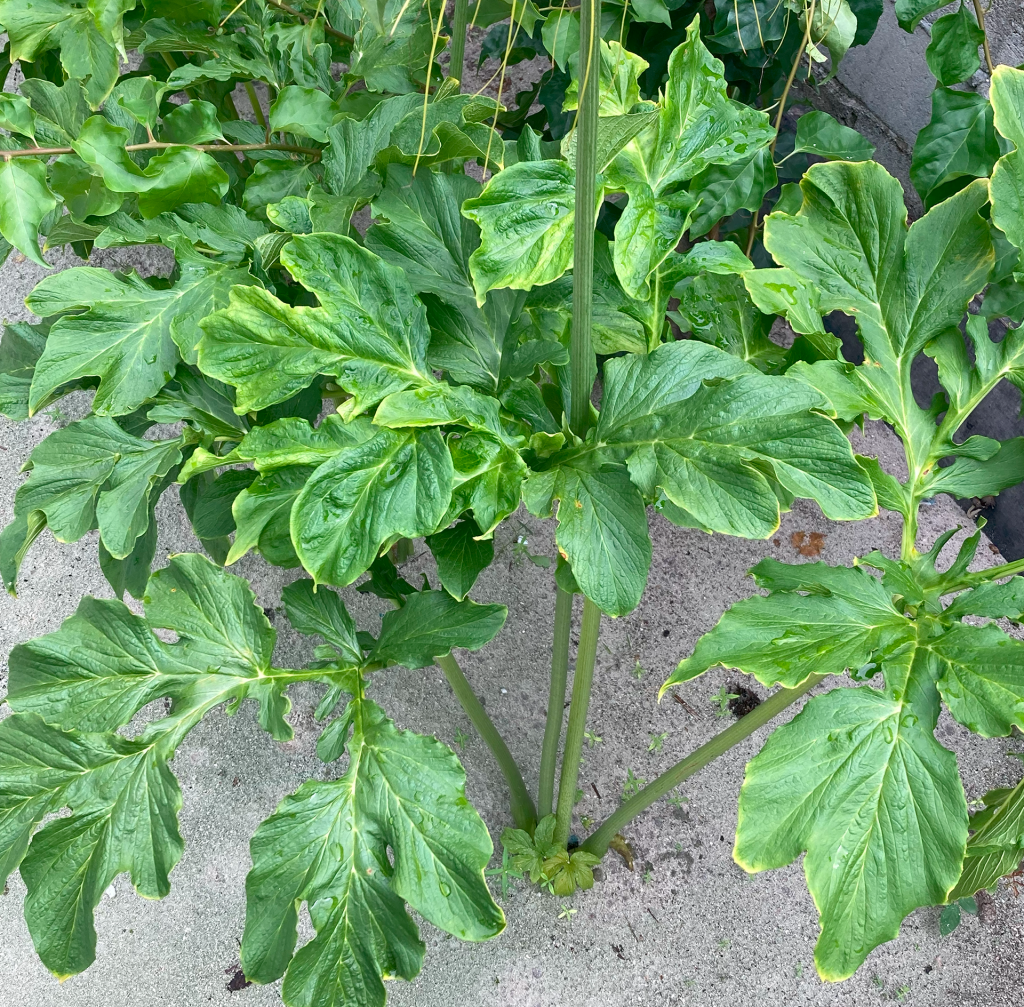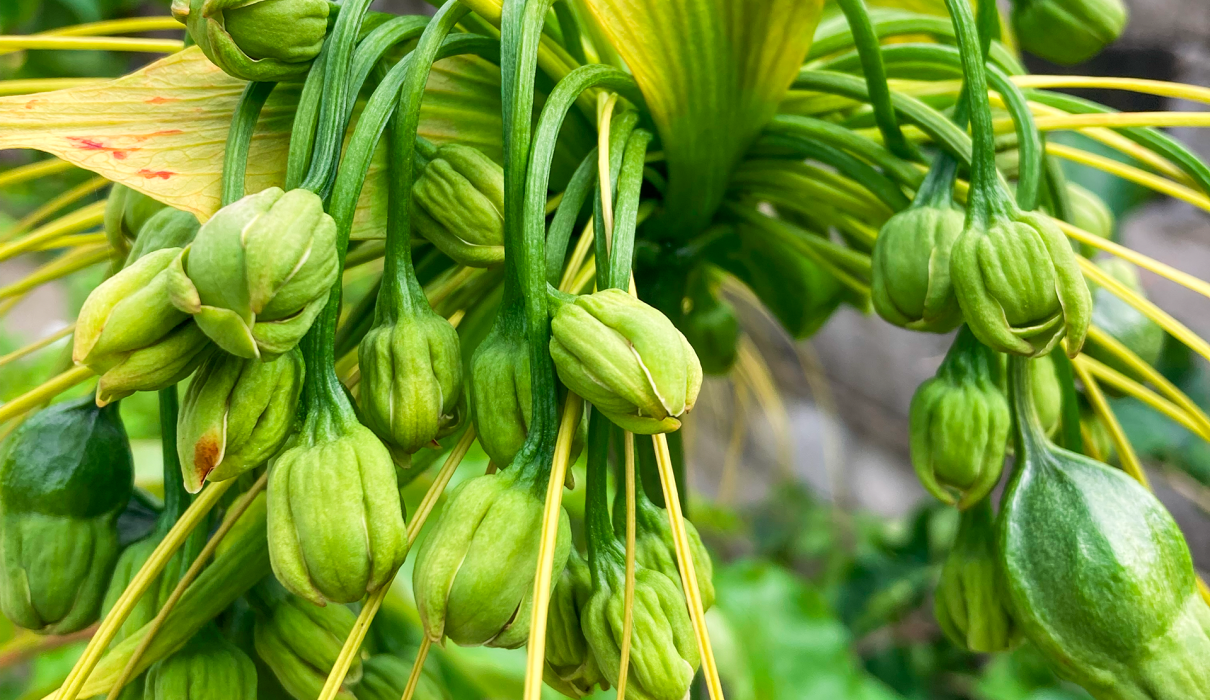Introduction: In the beautiful islands of the Maldives, there’s a special plant known as Hihthala (Tacca leontopetaloides). It’s not just a pretty flower; it’s a plant that connects with the culture and nature of the Maldives.


Origins and Migration: Hihthala comes from Southeast Asia and traveled to the Maldives a long time ago with seafaring people. Over the years, it became part of the landscapes in Africa, South Asia, Australia, and Oceania.
Culinary Tradition: Hihthala has something special in its roots – tubers. In the Maldives, we call these tubers “Hihthala” too. People use these tubers to make flour for soups and a popular drink called ‘Fuh Pani’ or ‘Hihthala Fuh Fani.’ This sweet drink is a blend of biodiversity and our cultural heritage.
- Scientific Classification:
- Family: Dioscoreaceae
- Genus: Tacca
- Species: leontopetaloides
- Local Name:
- In Dhivehi, we call it Hiththala.
Tuber Characteristics: The tubers of Tacca leontopetaloides, known as “Hihthala” in Dhivehi, come in different sizes, from tiny to larger than a tennis ball. They have a simple cream-colored skin and white flesh. When we harvest them, they’re asleep, but these tubers have played a big part in Maldivian history as an essential food source.
Other Names: Hihthala goes by different names like Polynesian arrowroot, Fiji arrowroot, East Indies arrowroot, pia, and seashore bat lily.
Cultural Significance: Beyond being food, Hihthala tubers are important in our culture. Families come together to harvest and prepare them, passing down traditions from one generation to the next. The tubers are more than just ingredients; they symbolize shared experiences and our cultural heritage.
Cultivation and Harvesting: Growing Hihthala involves taking care of its roots, which can range from 20 to 50, depending on the size of the tubers. These roots help the plant stay strong, especially in sandy soil. Harvesting is a family activity, bringing out tubers of various sizes.
Taxonomy and Synonyms: In the plant world, Hihthala belongs to the Taccaceae family. Other names for it include Leontice leontopetaloides L. and Tacca artocarpifolia Seem., adding more to its plant family.
Environmental Impact: Hihthala isn’t just about food; it also contributes to the environment in the Maldives. You can find it in open areas, especially where the soil is sandy, adding to the natural diversity of our islands.
Conclusion: As we explore the world of Hihthala, it’s clear that this plant is more than meets the eye. From its origins in Southeast Asia to its impact on Maldivian life, Hihthala is a special part of our culture, showing how nature and our traditions go hand in hand.
Reference: Food and Agriculture Organization (FAO)


